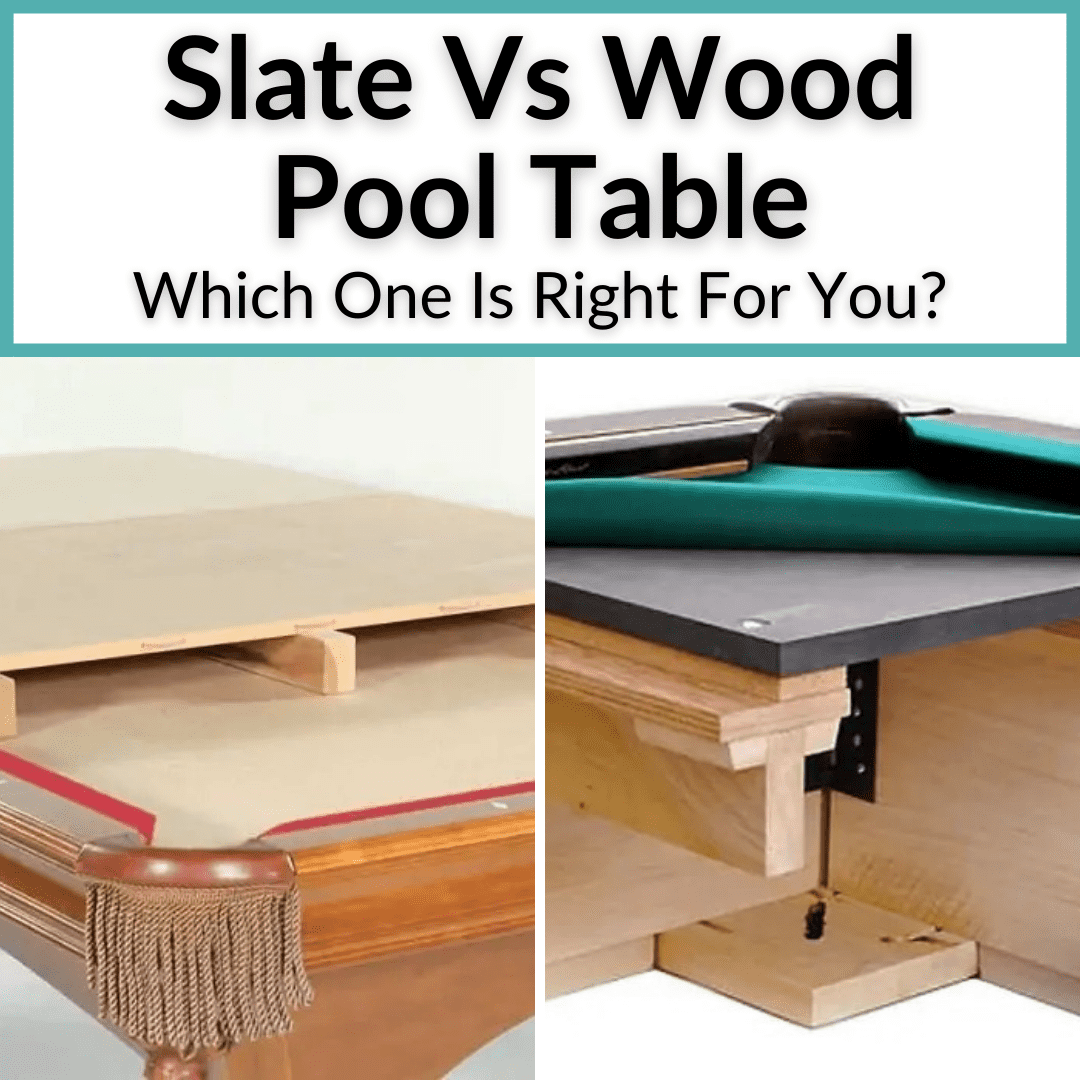 Having you own pool table at home is amazing!
Having you own pool table at home is amazing!
You get to practice all the time, and you always have something to do when you invite friends over.
If you’ve decided to get a table for your home, you’ve likely noticed that there are two main types: those with a wooden bed and those with a slate bed.
So which do you get?
Both have considerable advantages and disadvantages, but for most, there is a clear winner.
Keep reading for a complete breakdown of wood vs slate pool tables that will help you figure out which one of the two is the right type for you.
Table of Contents
Wood Vs Slate Pool Table
Pool tables consist of many different parts that are made from various materials. The most important component of the table for billiard players is the bed.
The material used in the bed, along with the pool table dimensions, is what largely determines the price of the table. It also directly affects your playing experience.
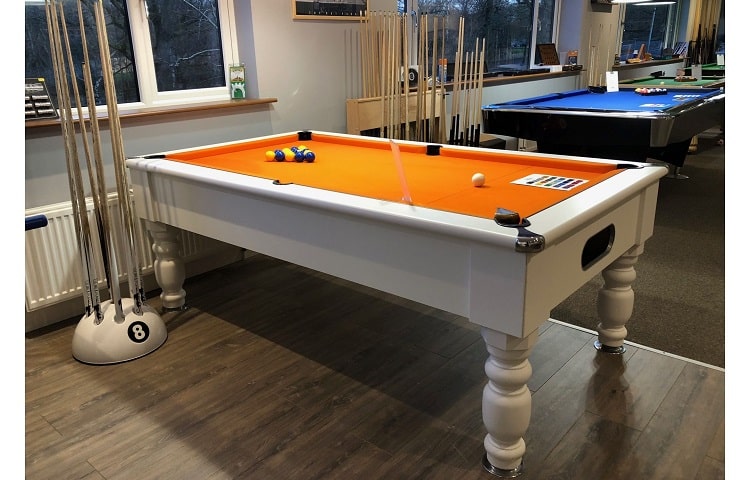
The bed material also effects how durable the table is. Almost all pool table beds are made of either wood or slate.
Wood (MDF) Pool Tables
Wood table manufacturers use MDF (short for medium-density fiberboard) in the flatbed.
MDF manufacturers combine a bunch of wood chips and mix them together with resin or wax. Then they compress the shaped wood to squeeze the air from it, making it a strong, solid piece.
MDF is an excellent choice for making wood tables. It has the most density and flatness among human-made wood composites. And pool tables definitely need a piece of wood that is perfectly flat.
Slate Pool Tables
Slate is the best and most expensive material to use in a pool table. Slate table beds are made of a piece of rock slate that is often up to 1 inch thick.
Manufacturers use the slate extracted from slate mines to make their tables. The extracted rock has to be machined and cut to become ready for the table. Manufacturers use special tools to hone the rock in order to create a perfectly flat surface.
Most standard slate pool tables are made from a single piece of slate. British pool tables almost always have a single piece of slate as the table bed. But some American pool tables, as well as snooker tables, use sectional slate.
The two or three parts of slate in those tables are fitted into the table cabinet. The manufacturer glues them in to make sure of the flatness.
Differences Between Slate And Wood Pool Tables
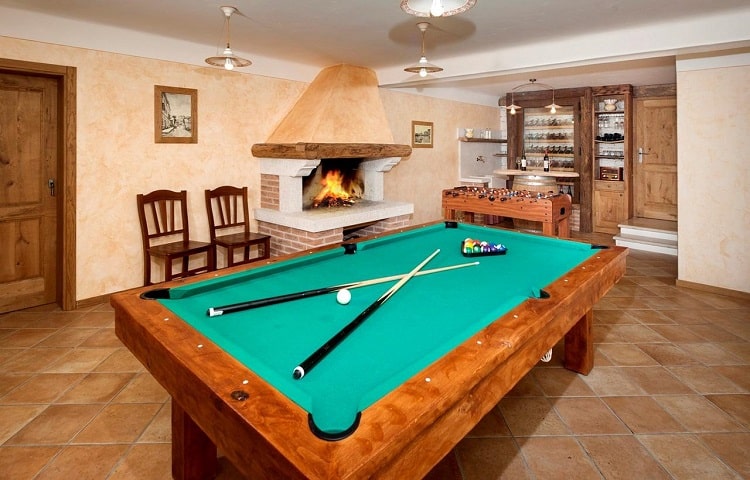
The most significant difference is the price tag. Slate pool tables are far more expensive.
Of course, there are several other major differences between slate and wood tables. Primarily, they differ in durability, mobility, and playability.
These factors are just as important as the price, since they are the main reason people will happily pay more for slate tables. Let’s take a look at all of the main differences.
Price
Slate pool tables are more expensive, mostly because of the material used in the table bed. But the material used in other parts affects the price tag, too.
Slate pool tables have more features that make them more expensive.
The average price for a slate pool table is between $1,000 to $20,000. The price depends on the brand and the material used in other parts of the table, as well as the piece of slate in the bed.
Wood (MDF) pool tables are more affordable. Most people buying a table for home use go with a wood one.
MDF is the primary material of wood pool tables. It’s used in the bed and some other parts of the table body. It decreases the price significantly over slate.
The price range for wood pool tables is from $200 to $1,000. Again, it depends on the brand and the materials used.
Quality And Portability
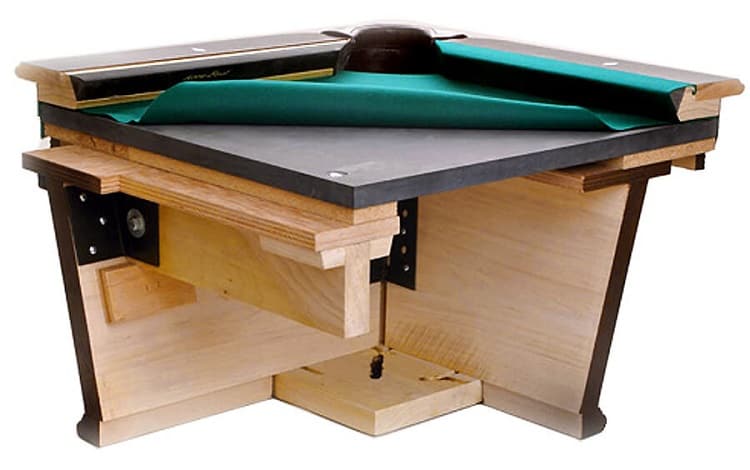
You can quickly feel the difference between a slate pool table and a wood-made one when playing on them. Slate pool tables are more durable. They do save you lots of money in the long-term.
Slate pool tables are resistant to warping. Pouring water, or any other liquid, on them doesn’t affect the bed material. You may need to change the table felt, however.
MDF is prone to breaking under pressure. You can’t put much weight on a wood pool table.
Humidity and liquid also affect the wood table bed. You have to be careful about cleaning a wood table to avoid warping.
The better quality of slate pool tables comes at a cost, however. And we’re not just talking money. Slate tables are significantly heavier than wooden ones.
The average weight of a slate pool table is about 250 kg (550 lbs). Wooden tables are definitely better if you think you might need to move the table frequently.
They’re not lightweight either (about 100 kg on average), but obviously weigh considerably less than slate ones. If you know you will be moving the table a lot, you could also consider a high quality portable pool table.
Playability
Professional pool players believe that there is a significant difference when playing on a slate pool table. You feel the smoothness and fast movement of the balls on them.
Wood tables give you the feeling of the balls dragging a bit. You need more power to move a ball on a wood table than to move it the same distance on a slate one.
Slate pool tables are the standard type for professional competitions. Many pool halls also buy these more expensive tables to offer the best experience. If you play a long time on a slate table, you’ll notice the difference when playing on a wood-made one.
Playing Style
Playing on a slate table is a must for those who want to go to tournaments. If you plan to compete in official pool competitions, you should consider buying a slate one. In other words, you have to do your training on the same type of table as the ones they use in tournaments.
If you want to buy a pool table for leisure only, MDF pool tables are better. You don’t need the professional features of slate pool tables when playing for fun.
Wood Pool Table Advantages And Disadvantages
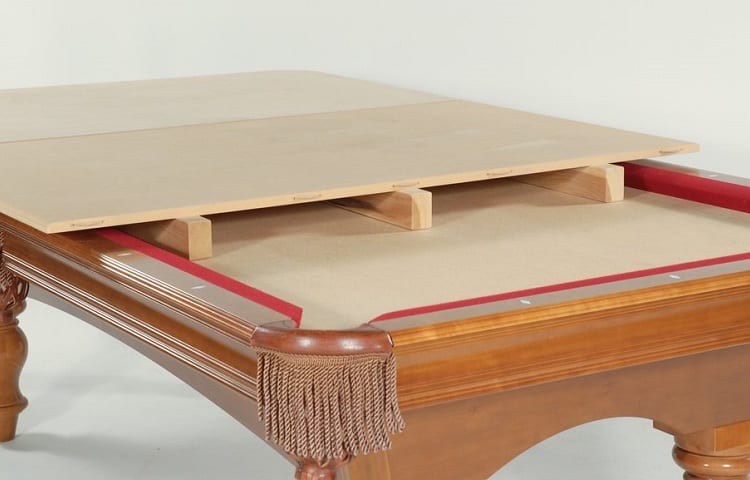
These less expensive pool tables are great for beginner players. They are far more affordable and much easier to move.
When buying a pool table for a home billiard room, wood (MDF) pool tables are generally the best option. Let’s take a look at the advantages and disadvantages of pool tables made from wood.
Wood Table Pros
These are the primary advantages of wooden tables.
Price
Wood tables are almost always less expensive, because the MDF material is far cheaper than slate. If you’re on a limited budget, wood tables are the best option by far.
Perfect For Kids And Beginners
Slate pool tables are usually large and heavy. There are limited options in kid’s sizes. A small pool table made from wood is generally a better choice as the first pool table for your children.
Beginner players are also better served with a wooden table, in most cases. Test your interest in the pool game with a cheaper MDF table first. Why spend a ton when you may not even continue using the table much?
Weight
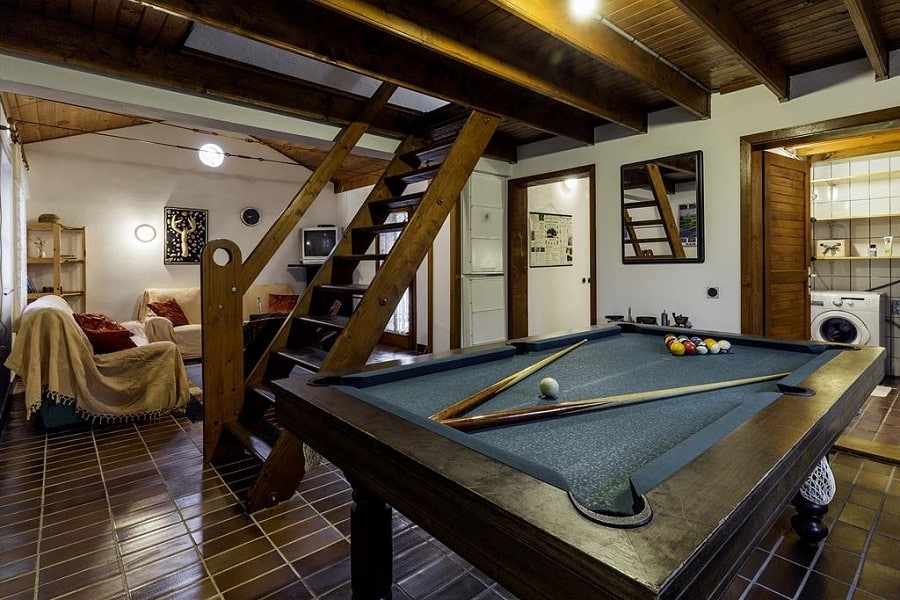
MDF pool tables are much lighter than ones made from slate rock. You can move them easier in your billiard room.
Wood Table Cons
These are the main drawbacks of billiard tables made of wood.
Susceptible To Liquid Damage
MDF is not resistant to liquids. When something spills on a wood pool table, the table bed absorbs the liquid. This will cause damage over time.
Potential To Warp
Wood is prone to warping or deterioration. If you put something heavy on your wood pool table, it may damage the bed. Even without that, some type of distortion inevitably happens over time.
Humidity also results in warping of wood pool tables. This means increased maintenance requirements with wood tables.
Playability
The feeling of the game is different from slate tables. Wood tables just don’t feel as professional. The wooden bed can cause a slight drag on the movement of the balls.
Slate Pool Table Advantages And Disadvantages
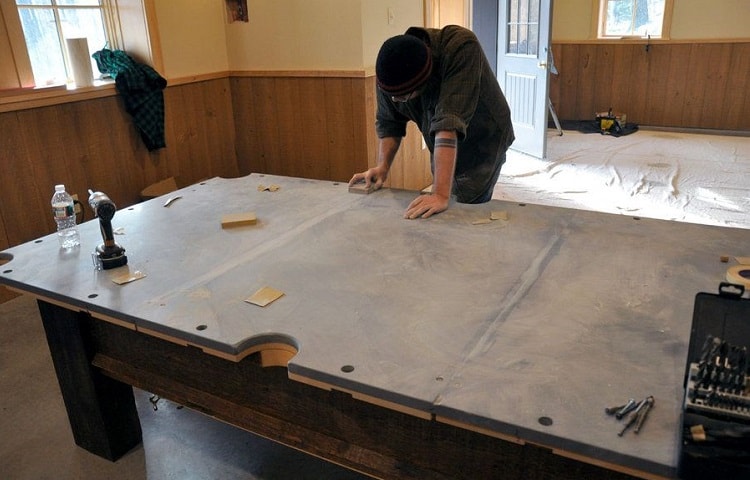
Pool tables made of slate are, simply put, more professional. They are far more expensive and most manufacturers use premium materials for every component. Let’s take a look at their primary advantages and disadvantages.
Slate Pool Table Pros
Let’s begin with the big advantages of billiard tables with a slate bed.
Playability
When you play on a slate pool table, you feel the professional control and movement of the balls. They just move much smother. The table itself also gives you a professional feel, because of its premium materials.
Durability
Slate rock is resistant to most weather and impact conditions. It is almost impossible to break it and nothing can cause it to warp easily either.
Slate Pool Table Cons
Now let’s take a look at the major disadvantages of slate billiard tables.
Price
The most expensive pool tables in the market are all made of slate. The slate material in the table bed costs far more than MDF and that increases the cost of the table. Other components also tend to be made from higher quality materials on slate tables, which drives up the cost even more.
Weight
Slate pool tables are hefty. You can’t move them an inch without help. This also results in higher costs to transport them.
How To Tell If A Pool Table Is Slate Or Wood
There are noticeable differences between a slate and a wooden pool table, all of which were already mentioned above.
You can spot the differences easily when playing. A slate pool table gives you a smoother ball movement, while a wood table has a slight drag.
The table weight is another obvious difference between wood and slate pool tables. Slate tables are almost impossible to move on your own.
Sometimes you can also see the bed material from below the table. In that case, just squat down and mystery solved.
Slate Vs Wood Pool Table: Conclusion
Wen it comes to wood vs slate pool tables, the decision comes down to your needs and budget. If your goal is to practice a lot at home with the intention of becoming a professional, then a slate table is the way to go.
But if you are just buying as billiard table to have fun, or if you are on a tight budget, a wooden table makes the most sense. Just make sure to treat it well, to avoid warping or other types of damage to the wood bed.
Leave a Reply